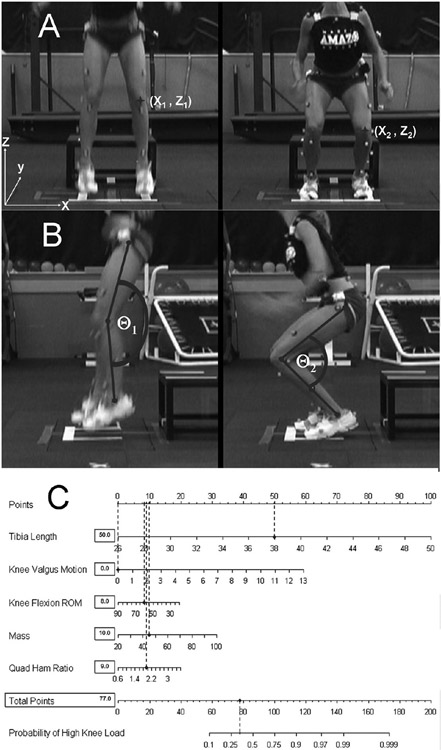Figure 6.
Example of representative subject with optimal neuromuscular control during the drop-vertical jump that limits her potential to demonstrate high KAM risk factor. A) Knee valgus motion during the drop-vertical jump is calculated (X2 − X1). B) Knee flexion range of ROM during the drop-vertical jump is calculated (Θ1 − Θ2). C) Completed nomogram for the representative subject (tibia length, 38 cm; knee valgus motion, 0.0 cm; knee flexion ROM, 66.5°; mass, 44.9 kg; QuadHam, 1.89). Based on her demonstrated measurements this subject would have an 30% (77 points) percent chance to demonstrate high KAM during the drop vertical jump. Her actual KAM measure for the presented drop-vertical jump that was quantified simultaneously with 3-dimensional motion analysis was 7.6 Nm of knee abduction load.

